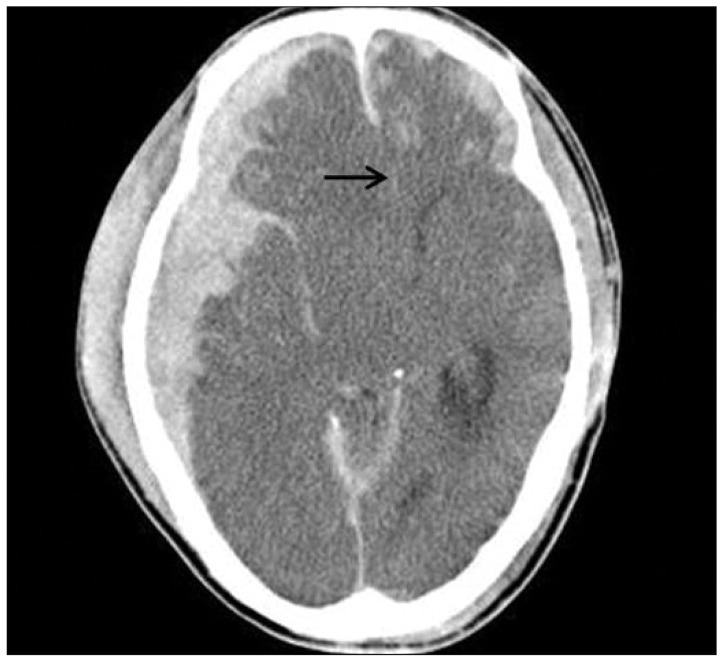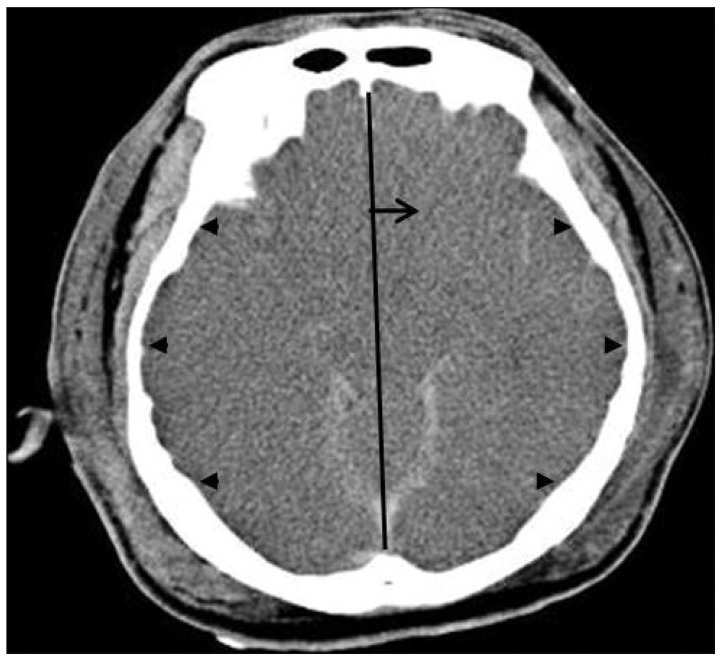J Korean Neurosurg Soc.
2013 Jul;54(1):42-46. 10.3340/jkns.2013.54.1.42.
Evaluation of Probability of Survival Using Trauma and Injury Severity Score Method in Severe Neurotrauma Patients
- Affiliations
-
- 1Department of Neurosurgery, Chonnam National University Hospital & Medical School, Gwangju, Korea.
- 2Department of Neurosurgery, Mokpo Hankook Hospital, Mokpo, Korea. cd1379@naver.com
- KMID: 2190857
- DOI: http://doi.org/10.3340/jkns.2013.54.1.42
Abstract
OBJECTIVE
Despite several limitations, the Trauma Injury Severity Score (TRISS) is normally used to evaluate trauma systems. The aim of this study was to evaluate the preventable trauma death rate using the TRISS method in severe trauma patients with traumatic brain injury using our emergency department data.
METHODS
The use of the TRISS formula has been suggested to consider definitively preventable death (DP); the deaths occurred with a probability of survival (Ps) higher than 0.50 and possible preventable death (PP); the deaths occurred with a Ps between 0.50 and 0.25. Deaths in patients with a calculated Ps of less than 0.25 is considered as no-preventable death (NP). A retrospective case review of deaths attributed to mechanical trauma occurring between January 1, 2011 and December 31, 2011 was conducted.
RESULTS
A total of 565 consecutive severe trauma patients with ISS>15 or Revised Trauma Score<7 were admitted in our institute. We excluded a total of 24 patients from our analysis : 22 patients younger than 15 years, and 2 patients with burned injury. Of these, 221 patients with head injury were analyzed in the final study. One hundred eighty-two patients were in DP, 13 in PP and 24 in NP. The calculated predicted mortality rates were 11.13%, 59.04%, and 90.09%. The actual mortality rates were 12.64%, 61.547%, and 91.67%, respectively.
CONCLUSION
Although it needs to make some improvements, the present study showed that TRISS performed well in predicting survival of traumatic brain injured patients. Also, TRISS is relatively exact and acceptable compared with actual data, as a simple and time-saving method.
Keyword
MeSH Terms
Figure
Reference
-
1. Barmparas G, Singer M, Ley E, Chung R, Malinoski D, Margulies D, et al. Decreased intracranial pressure monitor use at level II trauma centers is associated with increased mortality. Am Surg. 2012; 78:1166–1171. PMID: 23025964.
Article2. Cayten CG, Stahl WM, Murphy JG, Agarwal N, Byrne DW. Limitations of the TRISS method for interhospital comparisons : a multihospital study. J Trauma. 1991; 31:471–481. discussion 481-482. PMID: 2020032.3. Champion HR, Copes WS, Sacco WJ, Frey CF, Holcroft JW, Hoyt DB, et al. Improved predictions from a severity characterization of trauma (ASCOT) over Trauma and Injury Severity Score (TRISS): results of an independent evaluation. J Trauma. 1996; 40:42–48. discussion 48-49. PMID: 8576997.4. Champion HR, Copes WS, Sacco WJ, Lawnick MM, Keast SL, Bain LW Jr, et al. The Major Trauma Outcome Study : establishing national norms for trauma care. J Trauma. 1990; 30:1356–1365. PMID: 2231804.5. Chiara O, Cimbanassi S, Pitidis A, Vesconi S. Preventable trauma deaths : from panel review to population based-studies. World J Emerg Surg. 2006; 1:12. PMID: 16759417.6. Copes WS, Champion HR, Sacco WJ, Lawnick MM, Keast SL, Bain LW. The Injury Severity Score revisited. J Trauma. 1988; 28:69–77. PMID: 3123707.
Article7. Gabbe BJ, Cameron PA, Wolfe R. TRISS : does it get better than this? Acad Emerg Med. 2004; 11:181–186. PMID: 14759963.8. Hannan EL, Mendeloff J, Farrell LS, Cayten CG, Murphy JG. Validation of TRISS and ASCOT using a non-MTOS trauma registry. J Trauma. 1995; 38:83–88. PMID: 7745667.
Article9. Kilgo PD, Meredith JW, Hensberry R, Osler TM. A note on the disjointed nature of the injury severity score. J Trauma. 2004; 57:479–485. discussion 486-487. PMID: 15454791.
Article10. Kilgo PD, Meredith JW, Osler TM. Incorporating recent advances to make the TRISS approach universally available. J Trauma. 2006; 60:1002–1008. discussion 1008-1009. PMID: 16688062.
Article11. Kim JJ, Gean AD. Imaging for the diagnosis and management of traumatic brain injury. Neurotherapeutics. 2011; 8:39–53. PMID: 21274684.
Article12. Kirkham JJ. A comparison of hospital performance with non-ignorable missing covariates : an application to trauma care data. Stat Med. 2008; 27:5725–5744. PMID: 18646254.
Article13. Millham FH, LaMorte WW. Factors associated with mortality in trauma : re-evaluation of the TRISS method using the National Trauma Data Bank. J Trauma. 2004; 56:1090–1096. PMID: 15179251.
Article14. Moore L, Lavoie A, Camden S, Le Sage N, Sampalis JS, Bergeron E, et al. Statistical validation of the Glasgow Coma Score. J Trauma. 2006; 60:1238–1243. discussion 1243-1244. PMID: 16766966.
Article15. Moore L, Lavoie A, LeSage N, Abdous B, Bergeron E, Liberman M, et al. Statistical validation of the Revised Trauma Score. J Trauma. 2006; 60:305–311. PMID: 16508487.
Article16. Moore L, Lavoie A, Turgeon AF, Abdous B, Le Sage N, Emond M, et al. Improving trauma mortality prediction modeling for blunt trauma. J Trauma. 2010; 68:698–705. PMID: 20220424.
Article17. Schluter PJ, Nathens A, Neal ML, Goble S, Cameron CM, Davey TM, et al. Trauma and Injury Severity Score (TRISS) coefficients 2009 revision. J Trauma. 2010; 68:761–770. PMID: 20386271.
Article18. Trunkey DD. Trauma. Accidental and intentional injuries account for more years of life lost in the U.S. than cancer and heart disease. Among the prescribed remedies are improved preventive efforts, speedier surgery and further research. Sci Am. 1983; 249:28–35. PMID: 6623052.19. West TA, Rivara FP, Cummings P, Jurkovich GJ, Maier RV. Harborview assessment for risk of mortality : an improved measure of injury severity on the basis of ICD-9-CM. J Trauma. 2000; 49:530–540. discussion 540-541. PMID: 11003333.
- Full Text Links
- Actions
-
Cited
- CITED
-
- Close
- Share
- Similar articles
-
- Does the Probability of Survival Calculated by the Trauma and Injury Severity Score Method Accurately Reflect the Severity of Neurotrauma Patients Admitted to Regional Trauma Centers in Korea?
- Nationwide Evaluation of the Validity of the Trauma and Injury Severity Score Method in Korean Regional Trauma Centers Using Multi-Institutional Large-Scale Data
- The Relationship Between Trauma Scoring Systems and Outcomes in Patients With Severe Traumatic Brain Injury
- The Efficiency of Ground Transport and Efficacy of Mobile Trauma Unit on the Inter-Hospital Transfer of Severe Trauma Patients
- Alternative Method of Trauma Patient Evaluation and Quality Assessment



